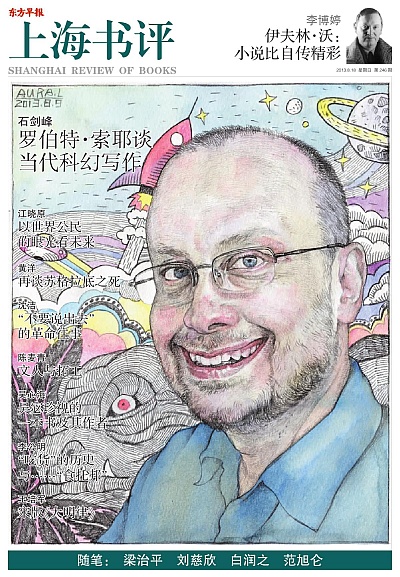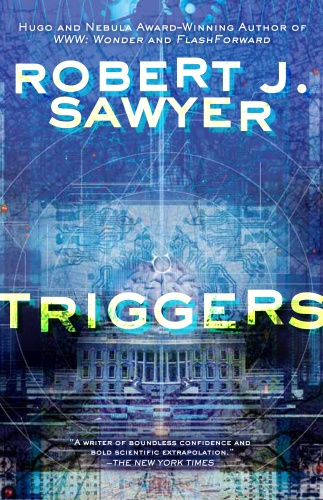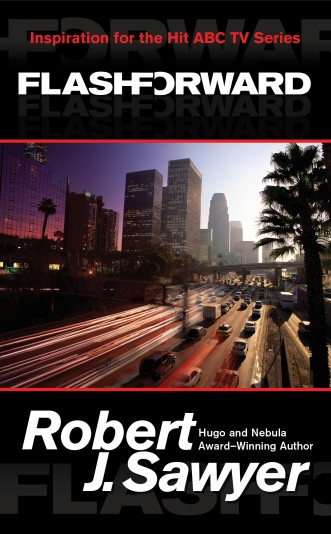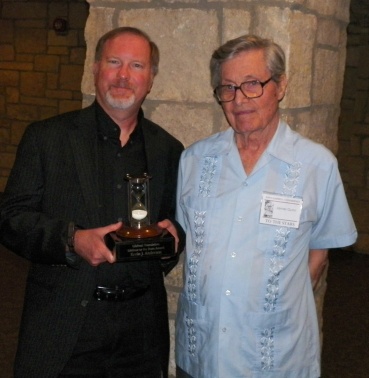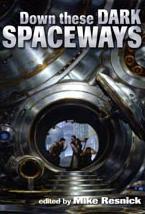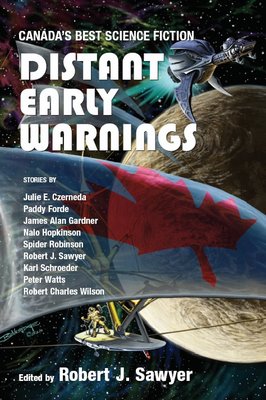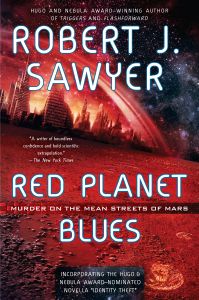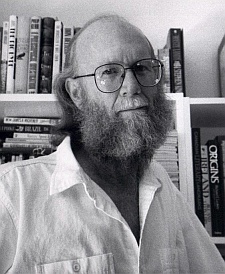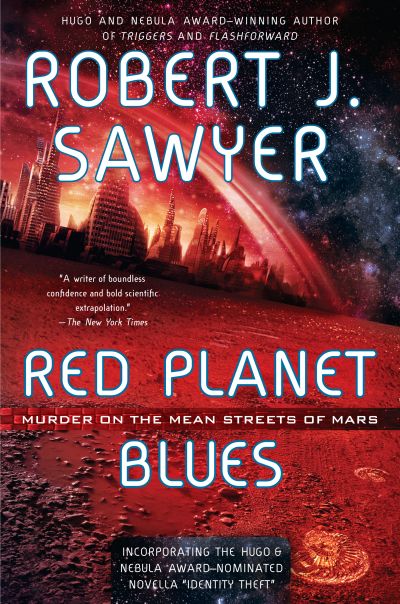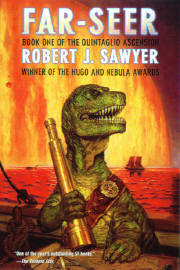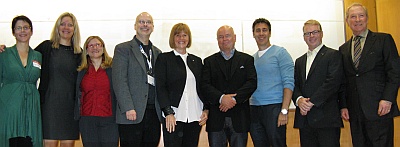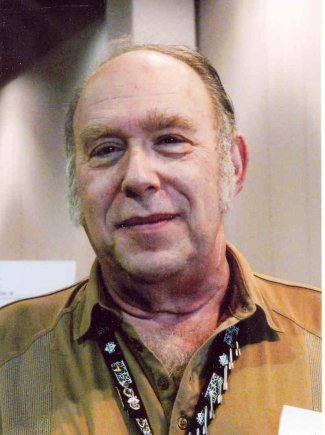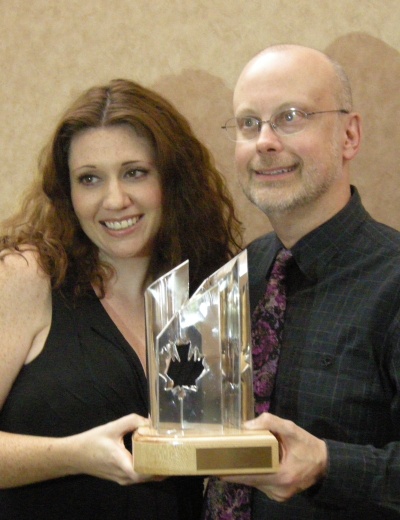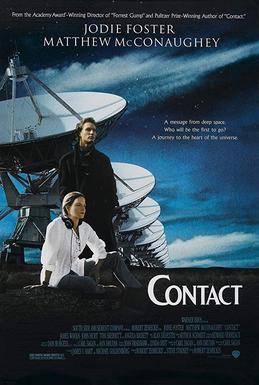McMaster conference absolutely wonderful
by Rob - September 17th, 2013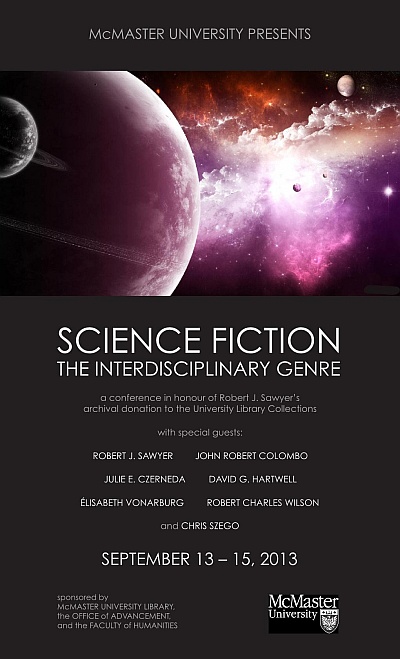
Science Fiction: The Interdisciplinary Genre turned out to be one of the best weekends of my life. Over one hundred scholars from all over North America joined us for this amazing conference in honour of the donation of my archives to McMaster University in Hamilton, Ontario. The conference was sponsored by the McMaster Faculty of Humanities, Library, and Office of University Advancement, and chaired by Dr. Catherine Grisé and Dr. Nicholas Serruys.
Before the conference began, The Silhouette (the McMaster campus paper) did great interviews with me and with Catherine Grisé, The Hamilton Spectator did an absolutely terrific article, and the William Ready Division of Archives and Research Collections unveiled its description of the archival donation.
Friday night, September 13, 2013, began with a wonderful reception at the University Club, which included my keynote address and a lovely display of items from my archives ranging from a short story I wrote in pencil when I was eight years old to the final manuscript for my Hugo Award-winning Hominids. (Here are McMaster’s official photos from the reception.)
On Saturday, Spetember 14, I introduced three speakers, all of whom were among our Special Guests for the conference:
- John Robert Colombo started us off with a plenary talk called “400 Years of Rob Sawyer,” a fascinating look at my career against the backdrop of the history of fantastic literature in Canada.
- Tor Books senior editor Dr. David G. Hartwell then gave an excellent talk on the history of science-fiction anthologies (and announced that Tor Books had just had its best year ever financially!).
- And Chris Szego of Bakka Phoenix Books, the world’s oldest extant science-fiction bookstore gave an insightful talk about the retail side of the science-fiction industry.
There were three programming tracks at the conference, so I couldn’t attend everything, not even all the papers on my own work. I had to miss David DeGraff‘s presentation on using my novels and those of Julie Czerneda in the classroom, and Danielle Gagne‘s presentation on using my novel Rollback in a course about ethics and aging.
But I got to see Herb Kauderer‘s fascinating presentation on my use of pop-culture references; Rebecca McNulty‘s excellent paper on predictions in my novel FlashForward, and my stories “The Hand You’re Dealt” and “The Abdication of Pope Mary III”; Nick Matthews wonderful paper on ethics in my fiction; and Andrew Kidd‘s truly fascinating “Factoring Unity: E.O. Wilson’s Consilience and the Science Fiction of Sawyer and Van Vogt.”
(Andrew brought me a most thoughtful gift: two old collectible paperbacks of Nigel Kneale’s Quatermass scripts.)
Carrie J. Cole — who had been on the Not End of the World Cruise with us in the Caribbean last December — gave an excellent talk entitled “Science and the Staging of the Speculative Imagination: Interdisciplinary and Intertextual Performance Strategies.” Nothing like a theatre person to knock the presentation out of the park!
The Saturday night banquet was incredible: I heard many people say it was the best university and/or the best conference food they’d ever had. Although I had lots of old friends in the room, I made a point of sitting with a table of undergrads — and called Robert Charles Wilson over to join us. I think it’s fair to say the students were pleased to dine with us.
Julie Czerneda had to bow out at the last minute, leaving a slot open on Sunday morning, September 15, and so Robert Charles Wilson and I mounted the Rob and Bob Reunion Tour. We’re both working on books on a similar theme, and we each gave very well received readings from them in a plenary session: Bob read from his forthcoming Burning Paradise and I read from my forthcoming The Philosopher’s Zombie. The readings were introduced by Chris Szego.
Then John Robert Colombo, Élisabeth Vonarburg, and Mark Leslie Lefebvre joined us on stage for a writers’ panel discussion.
Then began the day’s three tracks of programming. I really wanted to hear a trio of papers touching on the theological and psychological themes in my work (including one by David Corman, who had just finished his master’s thesis on my novel Mindscan), but I was busy in a different session, listening to great papers by Rev. Paul Fayter and Kobo’s Mark Leslie Lefebvre, then giving my own talk on “Martian Geology and Paleontology in Sawyer’s Red Planet Blues. Nick Serruys moderated this session.
After a wonderful lunch, chatting with Edo Van Belkom and others, it was time for the first of the two afternoon programming blocks. I moderated the “Philosophy” session, in which Joseph A. Novak of the University of Waterloo presented a lengthy, fascinating paper on “Consciousness in the works of Robert J. Sawyer” and game theorist David Robinson from Laurentian University did a wonderfully lively presentation on “Games, Minds, and Sci-Fi.”
For the final session, I sat in on a trio of papers on the theme of Disability and Queer Studies, and then the conference chairs and I made a few closing remarks — and Cathy and Nick shared the news that the proceedings of Science Fiction: The Interdisciplinary Genre will indeed be published; they have already been approached by one publisher and are evaluating options, but a printed book of the papers is forthcoming.
This was doubtless the biggest and best academic conference about Canadian science fiction ever held anywhere, and it exceeded my hopes in every way. Cathy and Nick did a fabulous job pulling it together, and McMaster got 100% behind the event. I could not be more pleased or more honoured.
Some photos (first six by Carolyn Clink; last one by David G. Hartwell):
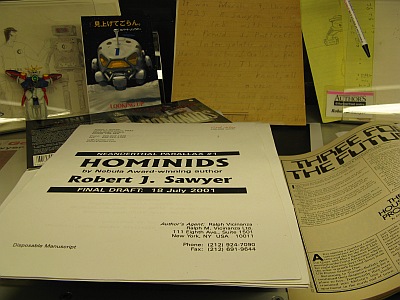
A few choice items from the 52 bankers’ boxes of materials comprising the initial donation, including a story Robert J. Sawyer wrote when he was eight, and the final manuscript for his Hugo Award-winning novel Hominids
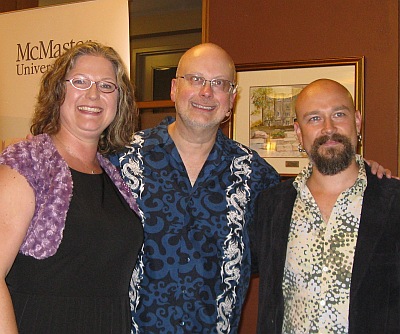
Conference co-chair Cathy Grisé, Guest of Honour Robert J. Sawyer, Conference co-chair Nicholas Serruys
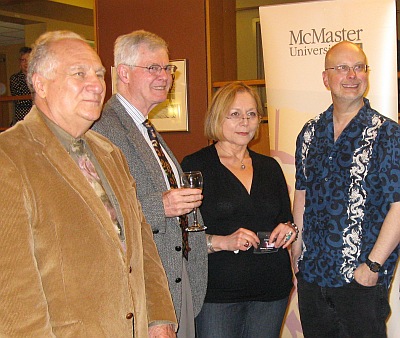
Special Guests John Robert Colombo, David G. Hartwell, Élisabeth Vonarburg, and Guest of Honour Robert J. Sawyer
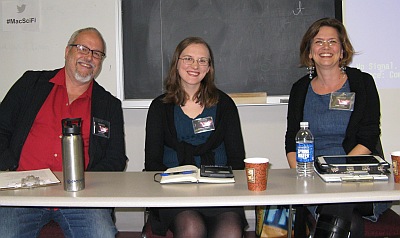
Presenters Herb Kauderer of Hilbert College, Rebecca McNulty of the University of Florida, and Carrie J. Cole of the Indiana University of Pennsylvania
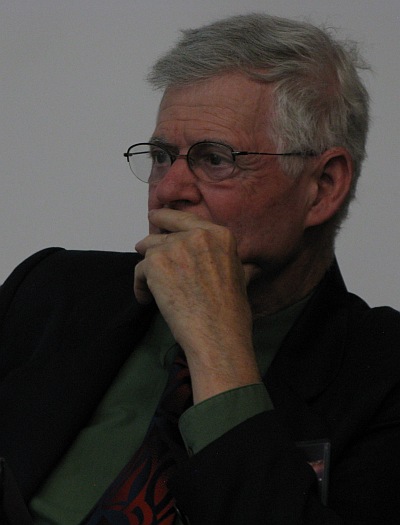
Tor Books senior editor David G. Hartwell, who holds a Ph.D. in comparative medieval literature
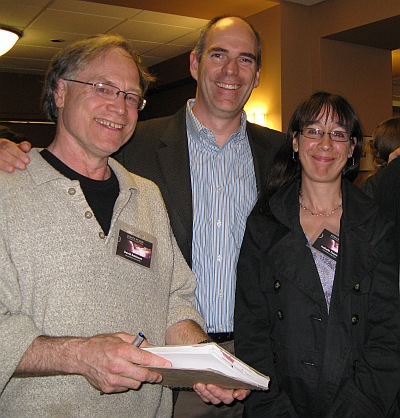
Presenters David Robinson from Laurentian University; Mark Lefebvre from Kobo; and Isabelle Fournier from the University of Buffalo
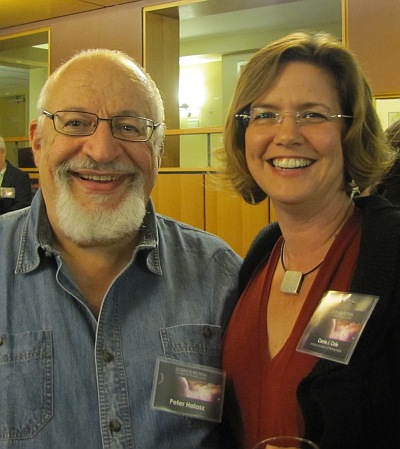
Last year’s World Fantasy Convention chair Peter Halasz and Dr. Carrie Cole
Robert J. Sawyer online:
Website • Facebook • Twitter • Email


